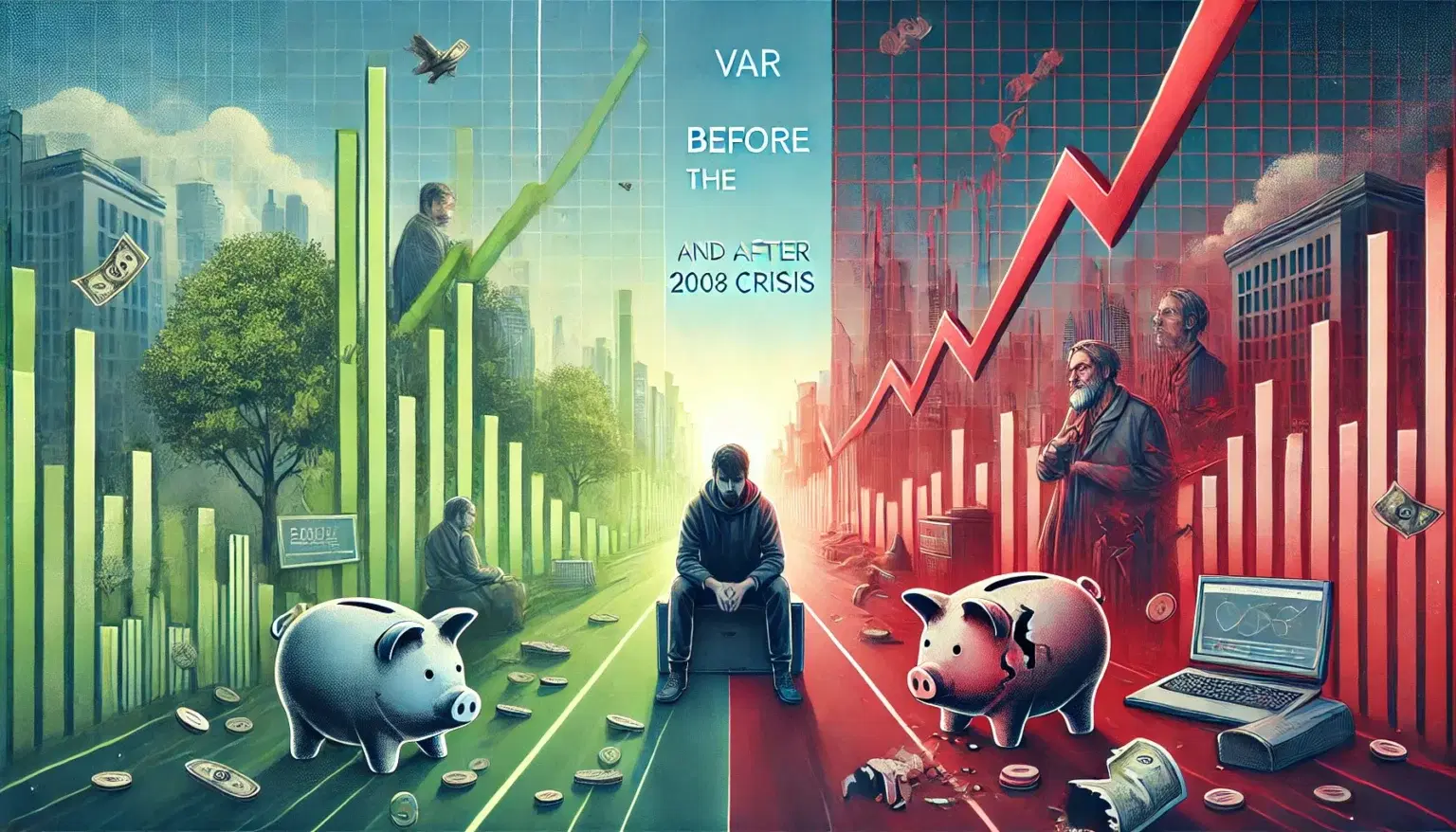Risk Management
VaR before and after the 2008 crisis

VaR’s application in the financial services industry since the 2008 Financial Crisis has changed, especially in terms of its use, application, and combination with other risk measures. Some criticisms against the VaR model pointed towards a serious failure in risk management practices during the crisis. Some key overview points on how the role of VaR has evolved since are provided below:
1. De Facto Reduction in Reliance on VaR as a LeveL of Risk
- Pre-2008: VaR was utilized as the primary and by far the most important risk metric, to such an extent that the measure became increasingly the standard level for the calculation of a firm’s risk exposure and regulatory capital requirement.
- Post-2008: It brought out the fact that VaR, more precisely the short-term VaR implemented by most of the banks at times fails to capture critical risks in extreme market conditions. The financial firms and the regulators learned the fact that VaR fails to incorporate tail risks alone. Nowadays, the firms use VaR as part of a cohesive set of risk measures rather than an independent measure.
2. Increased Usage of Additional Risk Measures
- Stress Testing and Scenario Analysis: After the crisis, stress testing is now required of financial institutions. This is usually considered in terms of modeling an extreme yet plausible scenario to determine how portfolios would perform in adverse situations. Scenario analysis helps complement VaR where it fails to capture extreme tail events.
- Expected Shortfall (ES): Also known as Conditional VaR, Expected Shortfall computes the average loss when passed beyond the threshold of VaR, which provides better measures of tail risk. The Basel Committee on Banking Supervision has further mandated ES in capital requirements.
- Liquidity-Adjusted VaR (LVaR): LVaR considers liquidity risks that were highlighted by the crisis, estimating the effects on losses due to decreased market liquidity.
3. Higher Regulatory Standards and Requirements
- The risk management framework now tightened up with reforms such as Basel III, emphasizing the use of even more robust and conservative metrics of risk. These newer standards require the institution to consider scenarios of extended and rather adverse conditions, therefore compelling banks to rely on the historical data of turbulent times in their VaR models.
- Regulatory frameworks now increasingly require Expected Shortfall instead of VaR for the computation of market risk capital requirements, on the basis that ES is more reliable at estimating the worst cases with respect to tail risks.
4. Increased Model Transparency and Overhaul
- Financial institutions have grown wary of the limitations of the VaR model. Internal risk appraisal and regulatory reporting demand greater transparency not only into model assumptions, but also to its limitations.
- Model validation and backtesting are becoming more stringent, such that firms are made periodically to confirm that their models accurately represent real losses.
5. More Stringent Regulation Over Tail Risk and Black Swan Event
- The crisis underlined the role of tail risk and VaR is not designed to handle these events. Financial companies are increasingly alert to the risks of “black swans” – uncommon, extreme, and unforeseen events that lead to a loss.
- Financial institutions increasingly use fat-tailed models, including some EVT-based models, that are better at modeling those infrequent and extreme losses.
6. Wider Acceptance of Dynamic and Adaptive Risk Models
- Recognizing the fact that institutions need techniques in their toolkit to rapidly adapt to changing conditions, many are embracing more dynamic strategies that can better take into account shifting volatility and correlation profiles without being bound by fixed historical data, as VaR models often are.
- Some companies use machine learning algorithms and advanced analytics to make their risk models more reactive and responsive to changing market conditions.
7.Increased Sensitivity of Behavioral and Systemic Risks
- The crisis showed that VaR failed to consider market interconnectedness and the possibility of systemic risk. Now, financial institutions use VaR measurements along with measures that take into account systemic risk and contagion, as many risks may run laterally through institutions and markets.
- The insights of behavioral finance were brought into risk measurement owing to the fact that in a period of crisis, irrational behavior by investors and market sentiments tend to increase the risks.
Summary
Since the Financial Crisis in 2008, VaR has evolved from being the leading measure of risk to being a component in a diversified toolkit for managing risk. The industry recognized its inability to capture extreme events or systemic risks and provided additional measures like Expected Shortfall, stress testing, and scenario analysis. High regulatory standards, adaptive modeling techniques, and bigger scope in tail risk and systemic interconnectedness are a basis for current risk management practices, with VaR forming a part of the risk assessment framework, far more resourceful and multi-faceted than before.


